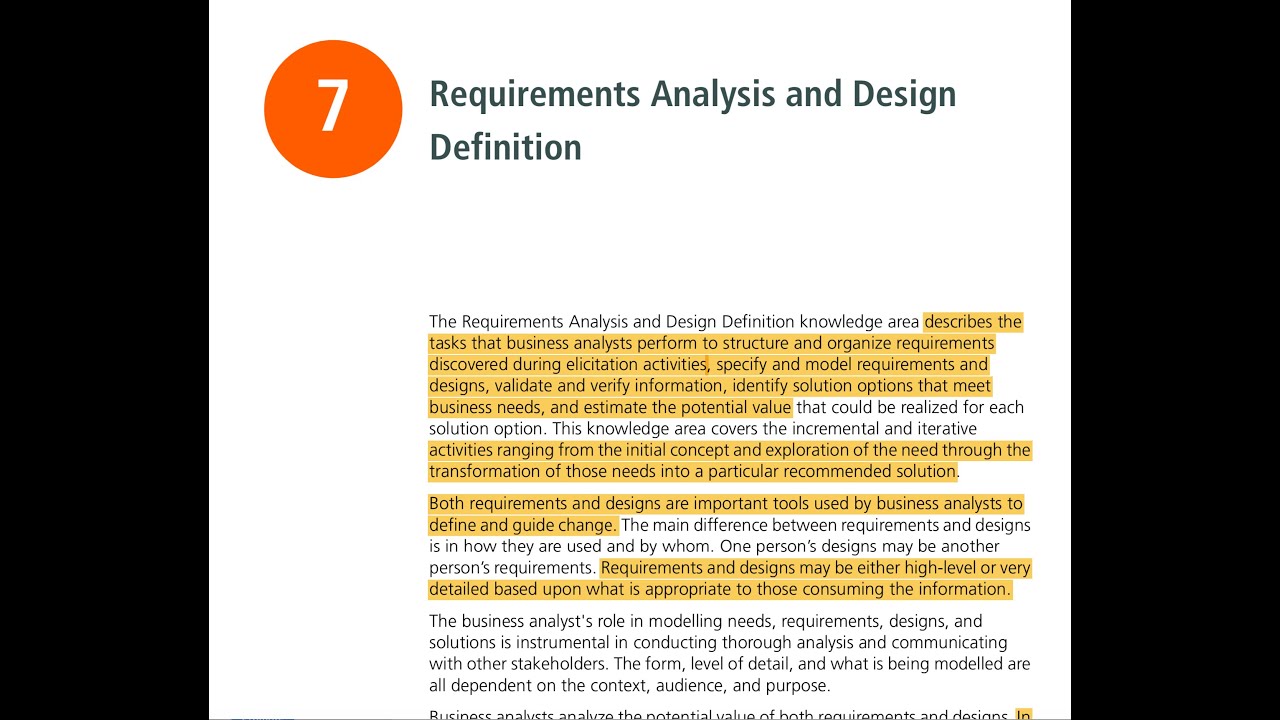
Description
Content
The diagraming and modeling step above is a great tool that can be used to interact with stakeholders to better understand their needs. The goal is to be as comprehensive as possible the first time through and get a big-picture view to minimize scrap and rework. For the success of any project, it is critical to analyze requirements when they are gathered as well as throughout the entire lifecycle of the project.

A data dictionary supports the data model as the repository of information about the data, including details on entities, their attributes, and relationships between the entities. PMBOK, fourth edition, section 5.1.2, has additional information regarding tools and techniques for requirements analysis. During requirements elicitation, the Planning Team should note all assumptions and constraints that will affect development and operation of the system. Requirements should also be prioritized based on relative importance and by when they are needed.
How to Do Requirement Analysis
Agencies may use the SDLC TMP template to help ensure that all appropriate testing activities are defined and documented. Do involve all project stakeholders in the identification and validation of requirements. The Planning Team should describe the system as the functions to be performed and not specific hardware, programs, files and data streams. The requirements must be unambiguous , traceable, complete, consistent, and approved.
- Here we review some popular techniques and point out the advantages and disadvantages of each.
- Next comes analyzing the requirements, which evaluates whether they’re clear, complete, consistent and unambiguous.
- Get started with this course today to become an expert business analyst.
- The Agile approach does not require development and maintenance of comprehensive documentation when performing requirements analysis.
- All stakeholders in a project – developers, end users, software managers, customer managers – must achieve a common understanding of what the product will be and do, or someone will be surprised when it is delivered.
- Analysis ensures that requirements are clear, complete, and consistent.
This includes internal and external customers, users, regulatory agencies, and stakeholder involved in the development of the product. It is the stakeholders who are the source of the needs and requirements the product must fulfill. It is important to define and understand the stakeholder needs and requirements before defining the product requirements to which the product requirement phase will be designed and built. Since there are multiple stakeholders, there will be multiple sets of stakeholder needs and requirements. It is up to the project team to elicit these needs and requirements and to resolve conflicts, inconsistencies, and other issues. The results will be an integrated set of needs from which the product requirements will be transformed.
Flowchart technique
Project requirement analysis helps project teams to focus on consumer needs, and fulfilling the expectations of the population that will ultimately use a product. In other situations, it may be that some stakeholders won’t know exactly what they need until they see the product in action. This means the process of evaluating needs and requirements almost never ends.

Using tools that promote better understanding of the desired end-product such as visualization and simulation. Building prototypes helps you test ideas and encourage discussions but only build prototypes you can really use within the project in some way. Not each User Story is detailed enough, so complement it with use cases, traditional requirements or decision tables. Applying these best practices is essential as far as you have viable User Story, which represents requirements in a simple written narrative as opposed to a fixed and wide-ranging document. Create a prototype, if needed, to confirm or refine the customer’s requirements. Specific procedures for CATS Task Order contractor selection and award are included on the CATS+ TORFP Preparation, Solicitation, and Award Process web page and the CATS+ State ADPICS Processing Procedures.
When is a requirements analysis carried out?
Erroneously including design specifications in the FRD may unnecessarily limit competitive responses to the implementation solicitation. Do include requirements that are complete, consistent, measurable, and indivisible. The Planning https://globalcloudteam.com/ Team develops the FRD, which contains the complete system requirements and describes the functions that the system must perform. The Project Manager routinely updates the PMP to ensure the PMP reflects project performance accurately.
Even though the Product Owner is responsible for and owns the backlog collaboration and transparency with the Agile team is key. Model storm throughout an iteration to better understand the details behind a requirement. If the quality is not up to their standards, then no matter how efficiently the project was managed, it failed.
Define Requirements Architecture
The Requirements Analysis Phase begins when the previous phase objectives have been achieved. Documentation related to user requirements from the Concept Development Phase and the Planning Phase shall be used as the basis for further user needs analysis and the development of detailed requirements. Take great care to ensure that you understand what is required, what features are needed, and how it should work. You should also consider the feasibility and form initial plans of how you are going to build and test the application. If you unknowingly make mistakes at this stage, they will propagate through the design and build. Many systems effectively fail at this stage, but the failure does not become apparent until much later, by which point it has cost time and other resources and is more difficult to put right.
Failing to do proper requirements analysis may result in a network architecture and design that are based on factors other than what the users, applications, or devices need. For example, the network may be based on a technology whose primary asset is simply that the designer feels comfortable with it. Or perhaps it is a network based on a particular vendor’s equipment, again often one that the designer feels comfortable with. Another obvious example is a project that has a budget constraint or deadline that forces the designer to make do and use familiar, easy-to-apply technologies. Problems with such choices are that they are not objective and that familiar technologies or vendors may not be the right choices for that particular network.
Using Smartsheet to Document and Share Requirements Boosts Transparency and Collaboration
The documentation should also comprehensively cover the processes, workflow, dependencies, hierarchies, and so on. Accurately identifying, analyzing, and defining the problem that the business faces. This should also include information on the solution and the various benefits expected from the solution. To package set of requirements in an appropriate manner for effective stakeholder communication.

